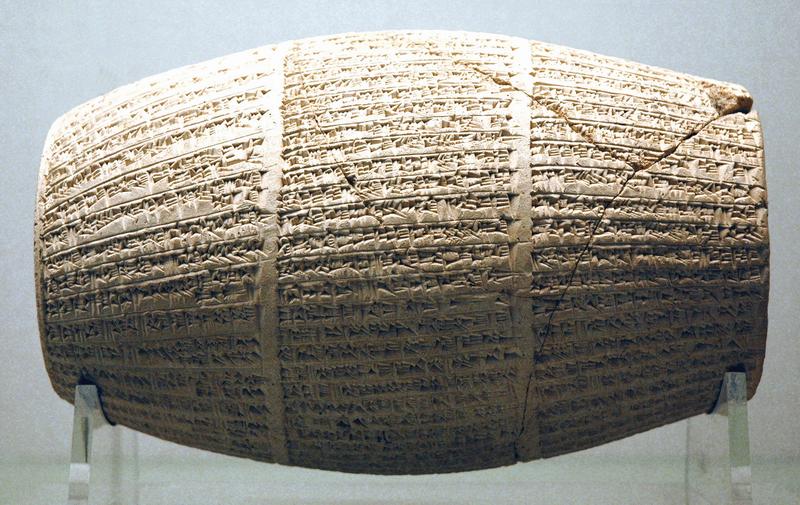There is a fascinating story about just how the Persians under Cyrus conquered the great city of Babylon that Nebuchadnezzar had built after it went into decline under the rulers that followed him. The story is recorded in the writings of Heroditus and others.
These historians though name Nebuchadnezzar's son Nabonidus as the king of Babylon when the walls were breached and the city overrun. They make no mention of any Belshazzar - the Babylonian ruler that Daniel deals with here - as king at any time.
Fast forward to 1973. I am sitting in a Humanities class as a freshman at Davidson College preparing to be a pastor in the denomination that the college is affiliated with. We are taught that Daniel is more "historical fiction" than historical record. Among the reasons we were given was this: The Book of Daniel refers to Belshazzar as "King of Babylon" but there is no other historical record of Belshazzar at all and someone else is named as king at that time. Clearly, the authors of Daniel had their facts wrong was the conclusion, and by inference, this could be extended to other portions of the Bible. The young men in my dorm quickly extended it to the Bible's statements on sexual ethics and behavior, but that is a different story for a different day.
 |
| The Nabonidus Cylinder |
Little did we know - speaking for myself and my classmates - that in 1881 an archaeologist named Hormuzd Rassam had unearthed a clay cylinder while excavating what is now Abu Habba. The cylinder eventually made it's way to the Pergamon Museum in Berlin where it is today. Not until 1989 - notice this is 1989, nearly a century AFTER it was unearthed - was it translated by a scholar from the University of Toronto named Paul-Alan Beaulieu. Guess who is mentioned?
Belshazzar! Turns out that Belshazzar was the first-born son of Nabonidus and grandson of Nebuchadnezzar. Nabonidus made his son Belshazzar co-regent of the crumbling empire with him, and then he himself departed (ran for the hills?!?) leaving his son in charge of the city of Babylon almost as the Persians were surrounding it. We now understand that Belshazzar was a "second-in-command" of what was left of the Babylonian Empire just as it was overrun by the Persians. This explains why Belshazzar could only bribe his advisors with being "third highest ruler in the kingdom." (Daniel 5:7, 16, 29)
So. Buried for some 2,400 years, forgotten in a museum for another hundred and finally translated a decade after I graduated, the Nabonidus Cylinder testifies that the Book of Daniel is much more reliable history than my professors thought or taught.
CLICK HERE or CLICK HERE (Scroll down to Persian Conquest section) for further detail on these events from Wikipedia.
hmmm... Ancient words long preserved, for our walk in this world...and God's glory!
ReplyDelete